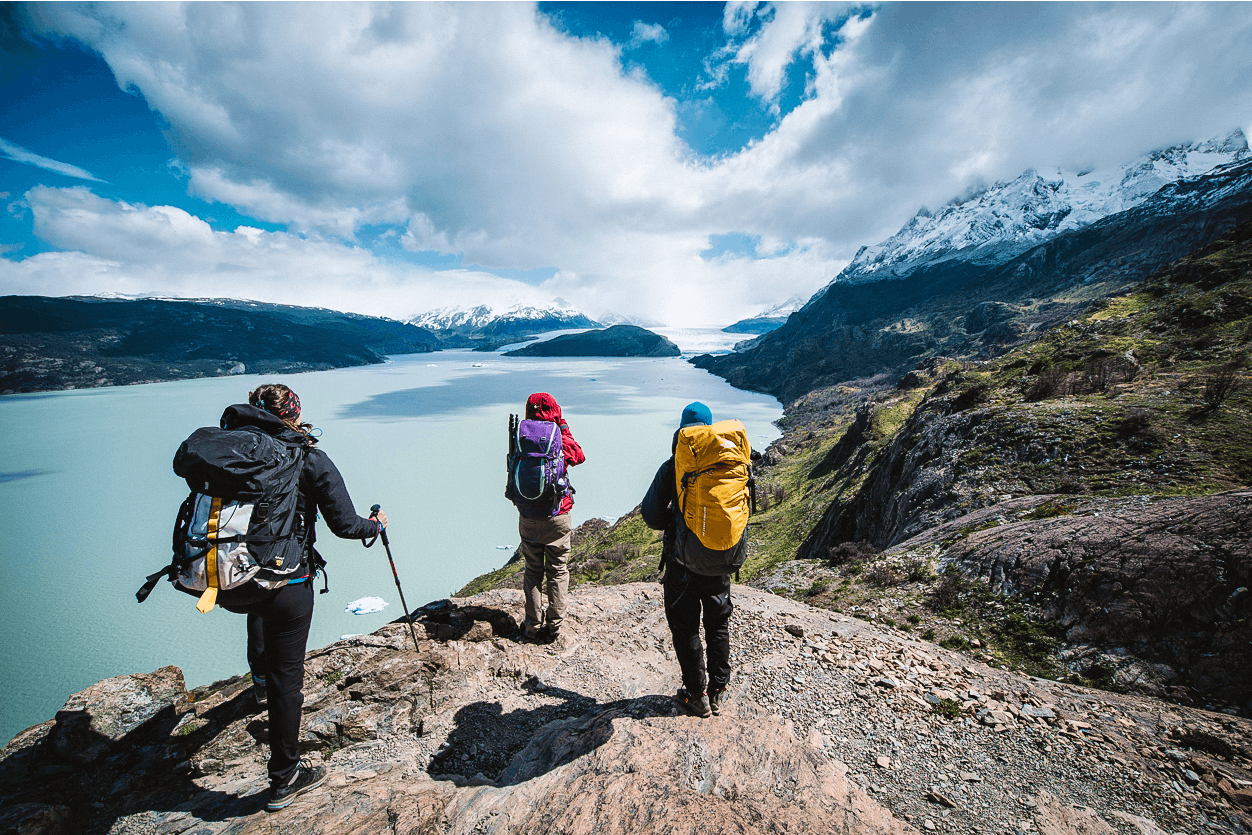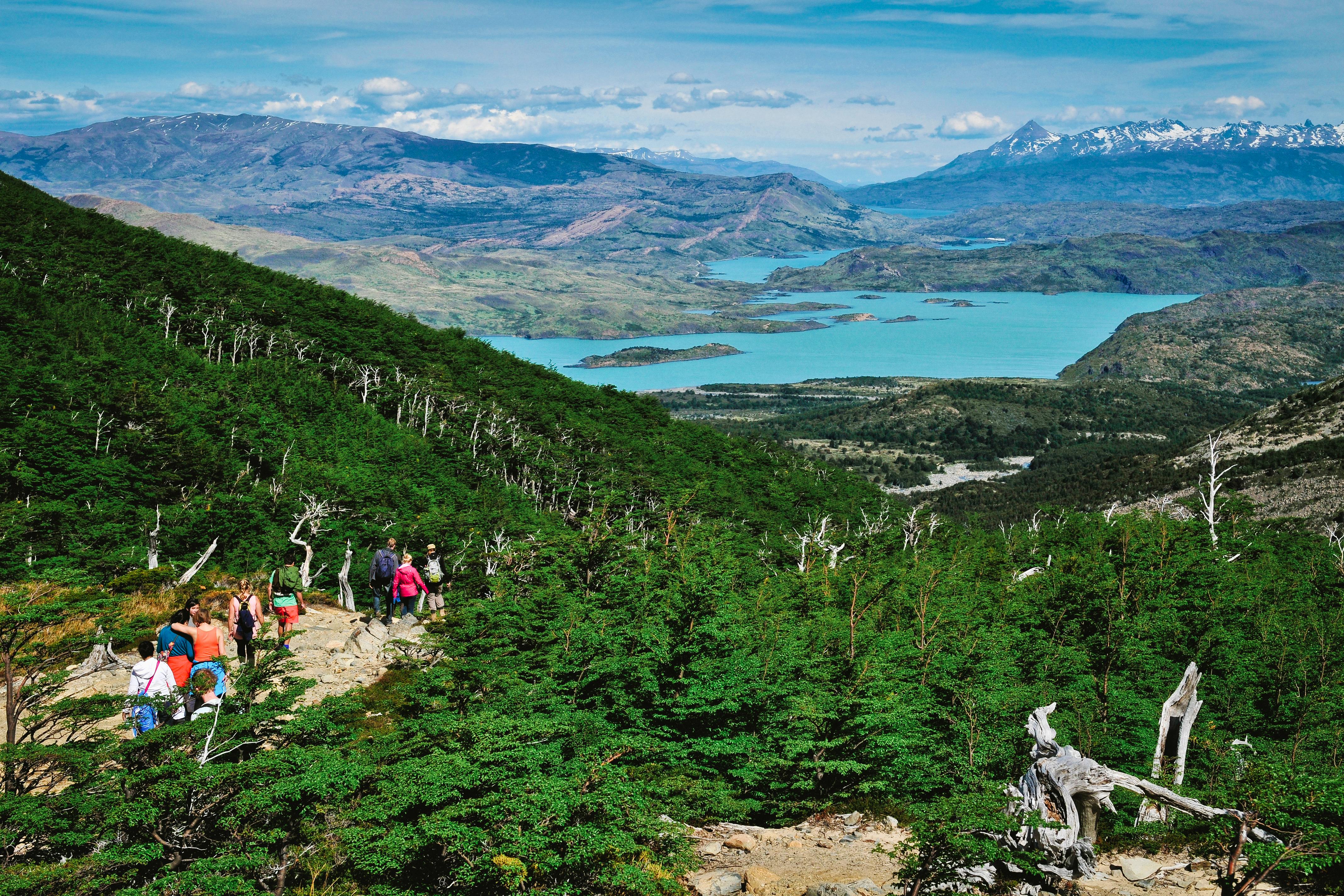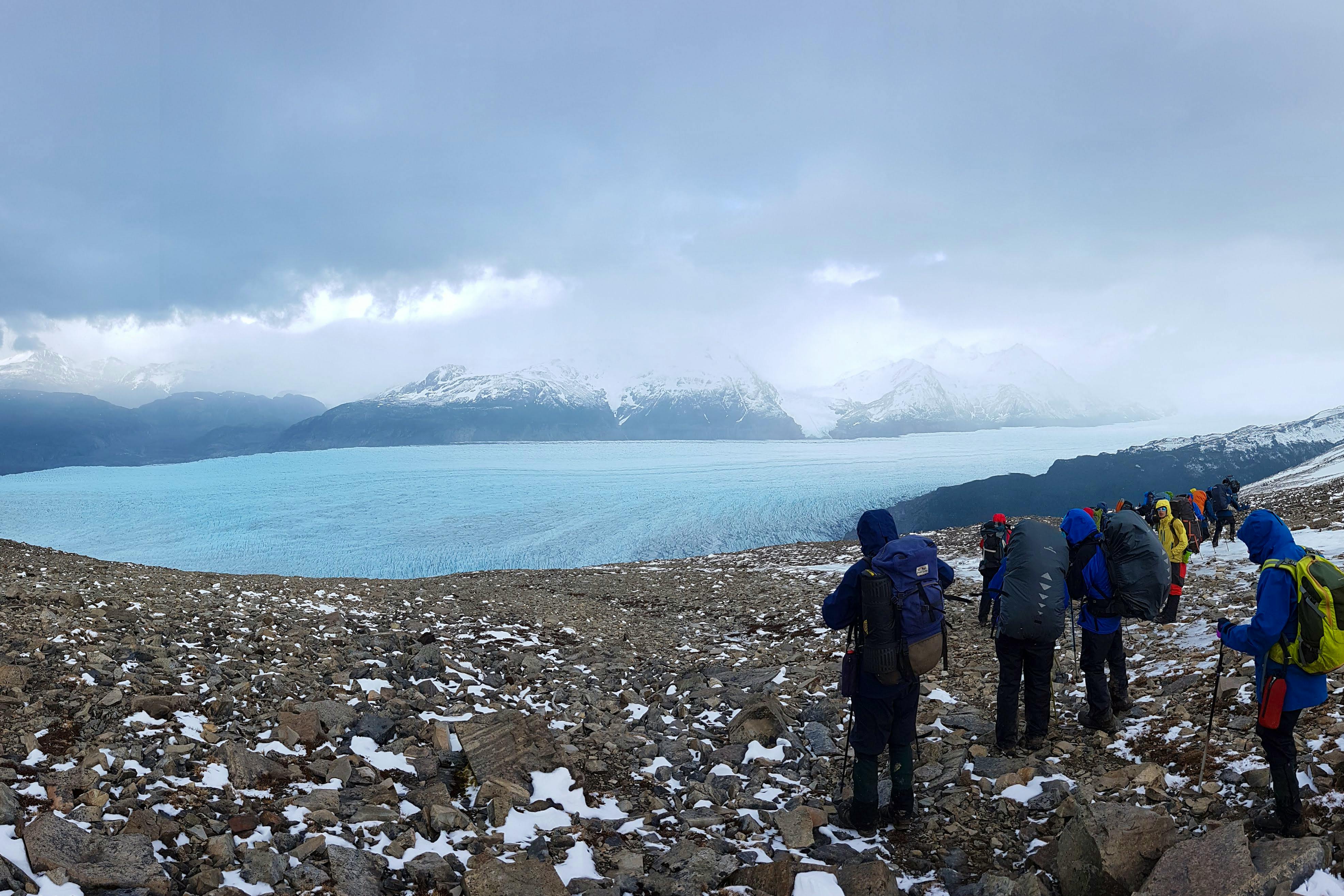Chile
Discover Chile's unparalleled adventure playground! With its diverse landscapes, from the icy wonders of Patagonia to the dramatic peaks of Torres del Paine, thrill-seekers can hike, kayak, and explore to their heart's content.
Snapshot of Chile Adventure Tours
One thing is for certain, Chile is a magical travel destination for adventurous spirits.
In Patagonia's vast wilderness, trek the legendary trails of Torres del Paine National Park, where towering granite spires meet glacier-fed lakes, offering unparalleled hiking and photography opportunities.
Venture further south to the remote fjords and windswept landscapes, perfect for kayaking amidst icebergs or witnessing the awe-inspiring power of Patagonia's glaciers up close.
For those craving high-altitude thrills, head to the Atacama Desert in the north, the driest place on Earth, where rugged canyons and lunar-like landscapes beckon mountain bikers, stargazers, and adrenaline junkies alike.
Dive into the turquoise waters of Easter Island, where you can snorkel among vibrant coral reefs and uncover the enigmatic Moai statues scattered across the island's captivating terrain.
In the Lake District, find your bliss amidst lush forests, crystal-clear lakes, and smoking volcanoes, ideal for hiking, horseback riding, and whitewater rafting adventures.
And don't forget the wine lovers – explore the vineyards of the Central Valley, tasting world-class wines against the backdrop of the Andes Mountains.
Whether you seek heart-pounding adventures or serene natural wonders, Chile offers an endless array of unforgettable experiences for the intrepid traveler.
Chile Travel FAQs
It really depends what you're after.
Visiting in September and October offers a unique experience. It's early spring in Patagonia during these months, so you can expect cooler temperatures and potentially unpredictable weather, including occasional snowfall and strong winds.
But, the park is less crowded compared to the peak summer months, providing a more serene and tranquil atmosphere for exploration. Wildlife sightings, including guanacos and native birds, are still abundant, and the landscapes are beginning to awaken with vibrant greenery and blooming flowers.
While some trails may be muddy or partially snow-covered, it's still possible to hike and explore the park's iconic sights, albeit with some additional precautions and flexibility due to the transitional weather.
Summer in Patagonia is from late November to early March. This period offers more moderate temperatures and longer daylight hours, making it ideal for hiking, camping, and exploring the stunning landscapes.
However, weather in Patagonia can be unpredictable year-round, so be prepared for sudden changes and always check forecasts before planning your trip.
Patagonia (including Torres del Paine National Park), the Atacama Desert, the Lake District, Easter Island, and the Aysén Region are all highly recommended for adventure seekers.
For popular activities like trekking in Torres del Paine or guided tours in the Atacama Desert, it's advisable to book in advance, especially during peak season. Doing so means you'll secure your spot and avoid disappointment.
The Towers (Las Torres): These iconic granite peaks are the park's namesake and one of its most striking features. Hiking to the base of the towers offers awe-inspiring views, especially during sunrise.
The W Trek: This classic trekking route takes you through some of the park's most stunning scenery, including Glacier Grey, the French Valley, and the Base Torres viewpoint.
Glacier Grey: Witness the awe-inspiring Glacier Grey, a massive ice field that flows from the Southern Patagonian Ice Field. Boat trips or kayaking excursions offer unique perspectives of this icy wonder.
Cuernos del Paine: These distinct horn-shaped peaks are another iconic feature of the park, offering picturesque views from various vantage points along the trails.
Lakes and rivers: Torres del Paine is dotted with pristine lakes and rivers, including Lake Pehoé and the Paine River, providing opportunities for kayaking, fishing, and simply soaking in the tranquil beauty.
Wildlife watching: From guanacos and foxes to condors and pumas, the park is home to a rich array of wildlife. Keep your eyes peeled for these fascinating creatures as you explore the trails.
Salto Grande: This impressive waterfall is formed by the Paine River as it tumbles between the Nordenskjöld and Pehoé Lakes, offering a mesmerizing natural spectacle.
Mirador Cuernos: This viewpoint offers stunning panoramic views of the Cuernos del Paine and the surrounding landscape, making it a must-visit spot for photographers and nature enthusiasts.
Trekking: Embark on the iconic W Trek or the more challenging Circuit Trek, both offering breathtaking views of the park's iconic peaks, glaciers, and lakes.
Wilderness camping: Spend nights under the stars at designated campsites or embark on a multi-day trek with backcountry camping, immersing yourself in the park's remote wilderness.
Kayaking: Paddle across the serene waters of Lake Pehoé or the glacial waters of Glacier Grey, marveling at the towering icebergs and rugged landscapes.
Ice hiking: Join a guided excursion to trek on Glacier Grey or venture into the park's icy wonders, exploring ice caves and crevasses.
Wildlife watching: Keep an eye out for guanacos, foxes, condors, and possibly even elusive pumas as you traverse the park's trails.
Horseback Riding: Explore the park's scenic vistas on horseback, immersing yourself in the rugged beauty of the Patagonian landscape.
Rock climbing: Test your skills on the park's granite cliffs and rock formations, with options suitable for climbers of all levels.
Photography: Capture the park's stunning scenery, from sunrise over the Towers to the vibrant hues of autumn foliage reflecting in the lakes.
Fly fishing: Cast your line into the pristine waters of the park's rivers and lakes, home to trout and salmon species, for a tranquil angling experience.
Birdwatching: Spot the diverse bird species, including Andean condors, black-chested buzzard-eagles, and Chilean flamingos, as you explore the park's varied habitats.
Camping in Torres del Paine National Park is an unforgettable experience. You get to immerse yourself in the pristine wilderness of Patagonia.
Campsites are strategically located throughout the park, offering stunning views of the surrounding mountains, lakes, and glaciers. Waking up to the sight of the sun rising over the Towers or the sound of a nearby waterfall is truly magical.
Independent hiking offers the flexibility to move at your own pace and experience the park's breathtaking landscapes intimately.
Hiking in Torres del Paine, particularly on the W, O, or Q treks, can be a fantastic experience and is quite feasible for independent hikers. The trails are well-marked and maintained, making it possible to hike without a guide if you're an experienced backpacker.
The best way to do it is to book an organized, self-guided hike. You'll receive a professional briefing, get a detailed map, and campsite bookings are made on your behalf.
You'll also have the campsite set up for you - no need to carry tents and equipment. Simply arrive from your day's activities, and settle in. You'll even get meals prepared for you.
Any missing hiking gear you can rent it in Puerto Natales - no need to travel with it.
The W and O circuits in Torres del Paine National Park offer different experiences. This is mainly due to their length, terrain, and what you'll see along the way.
The W Trek is approximately 80 km (50 miles) long and can typically be completed in 4 to 5 days. It is named after its W-shaped route and is more accessible, hence it's usually busier with trekkers.
This trek will take you past many of the park’s highlights such as the Grey Glacier, French Valley, and the Torres del Paine themselves. It's possible to stay in lodges along the W Trek, and meals are typically had in these lodges whether you're staying in them or camping.
On the other hand, the O Circuit is longer, approximately 110 km (68 miles), and usually takes 7 to 9 days to complete. It encompasses all of the W Trek plus a backside that provides more solitude and additional scenery like Dickson Lake, Los Perros Glacier, and John Gardner Pass.
The O Circuit is generally considered more challenging due to its length and the inclusion of more remote areas. There are fewer lodging options on the O Circuit's additional sections, meaning that camping is compulsory in certain parts.
It offers a more immersive experience into the wilder, less-traveled parts of the park. The O Circuit is only open during the summertime, from November to March, unlike the W Trek, which is accessible for a longer part of the year, from September to April.
There's also a cap on how many trekkers can be on the top section of the O Circuit at one time, specifically limited to 80 trekkers.
In terms of difficulty, both treks are manageable for people with regular hiking experience. But the O Circuit, given its longer duration and remote sections, requires more physical and mental preparation.
The elevation gain is higher on the O Circuit as well, presenting an additional challenge compared to the W Trek.
Why Skyhook?
Join over 27,000 Skyhook adventurers who've used our platform to book directly with our vetted local guides, at local prices (we never markup).
Expert Local Guides
Experienced local guides, handpicked by us.
Best Prices
Never pay a markup on the local guide's price.
Exclusive Club
Earn loyalty rewards every time you travel.
Great Social Vibes
Small group tours provide a richer experience.
Stellar Feedback
Over 2,800 reviews, average of 4.9/5 stars.








